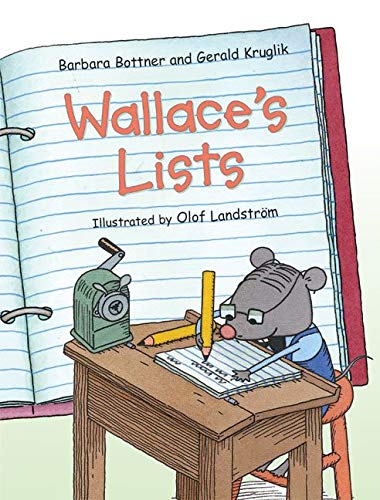A Day Without Agriculture (Grades K-2)
Students explore the wide scope of agriculture, identify the variety of agricultural products they use in their daily lives, and discuss the difference between needs and wants.

Background
Lesson Activities
Recommended Companion Resources
Credits
Author
Oklahoma Agriculture in the Classroom
Standards
Indiana Content Area Standards
-
Health and Wellness: Standard 1
Students will comprehend concepts related to health promotion and disease prevention to enhance health.
- 2.1.1 Health and Wellness: Identify that healthy behaviors affect personal health.
-
English Language Arts.Kindergarten.RL.1
Actively engage in group reading activities with purpose and understanding.
- Key Ideas and Textual Support.K.RL.2.1: With support, ask and answer questions about main topics and key details in a text heard or read. Further guidance for support will be provided in the Literacy Framework.
-
Health and Wellness: Standard 2
Students will analyze the influence of family, peers, culture, media, technology, and other factors on health behaviors.
- 2.2.1 Health and Wellness: Identify how the family influences personal health practices and behaviors.
-
English Language Arts.Kindergarten.RV.1
Use words, phrases, and strategies acquired through conversations, reading and being read to, and responding to literature and nonfiction texts to build and apply vocabulary.
- Vocabulary in Literature and Nonfiction Texts.K.RV.3.2: With support, ask and answer questions about unknown words in a nonfiction text.
-
English Language Arts.Kindergarten.W.1
Write for specific purposes and audiences.
- Writing Genres.K.W.3.2: Use words and pictures to develop a main idea and provide some information about a topic.
-
English Language Arts.Kindergarten.SL.1
Listen actively and communicate effectively with a variety of audiences and for different purposes.
- Discussion and Collaboration.K.SL.2.1: Participate in collaborative conversations about grade-appropriate topics and texts with peers and adults in small and larger groups.
-
English Language Arts.Grade 1.RV.1
Use words, phrases, and strategies acquired through conversations, reading, and being read to, and responding to literature and nonfiction texts to build and apply vocabulary.
- Vocabulary in Literature and Nonfiction Texts.1.RV.3.2: Ask and answer questions to help determine or clarify the meaning of words and phrases in a nonfiction text.
-
Social Studies. Grade 1: Economics: Standard 4
Students explain how people in the school and community use goods and services and make choices as both producers and consumers.
- 1.4.1 Economics: Identify goods (tangible objects, such as food or toys, that can satisfy peoples wants) that people use.
-
Physical Education: Standard 3
The physically literate individual demonstrates the knowledge and skills to achieve and maintain a health-enhancing level of physical activity and fitness.
- 1.3.6.A Physical Education: Differentiates between healthy and unhealthy foods.
- K.3.6.B Physical Education: Identifies healthy and unhealthy foods.
-
English Language Arts.Grade 1.W.1
Write routinely over brief time frame and for a variety of purposes and audiences.
- Handwriting.1.W.2.1: Write all uppercase (capital) and lowercase letters legibly, and space letters, words, and sentences appropriately.
-
English Language Arts.Grade 1.SL.1
Listen actively and adjust the use of spoken language (e.g., vocabulary) to communicate effectively with a variety of audiences and for different purposes.
- Discussion and Collaboration.1.SL.2.1: Participate in collaborative conversations about grade-appropriate topics and texts with peers and adults in small and larger groups.
- Discussion and Collaboration.1.SL.2.3: Listen to others, take turns speaking about the topic, and add ones own ideas in small group discussions or tasks.
-
English Language Arts.Grade 2.RV.1
Use words, phrases, and strategies acquired through conversations, reading and being read to, and responding to literature and nonfiction texts to build and apply vocabulary.
- Vocabulary in Literature and Nonfiction Texts.2.RV.3.2: Determine the meanings of words and phrases in a nonfiction text relevant to a second grade topic or subject area.
-
English Language Arts.Grade 2.W.1
Write routinely over brief time frames and for a variety of tasks, purposes, and audiences; apply reading standards to write in response to literature and nonfiction texts.
- Handwriting.2.W.2.1: Write legibly by forming letters correctly and spacing words and sentences properly.
-
English Language Arts.Grade 2.SL.1
Listen actively and adjust the use of spoken language (e.g., conventions, vocabulary) to communicate effectively with a variety of audiences and for different purposes.
- Comprehension.2.SL.3.2: Ask and answer questions about what a speaker says to clarify comprehension, gather information, or deepen understanding of a topic or issue.
- Discussion and Collaboration.2.SL.2.1: Participate in collaborative conversations about grade-appropriate topics and texts with peers and adults in small and larger groups.
- Discussion and Collaboration.2.SL.2.3: Listen to others, take ones turn in respectful ways, and speak one at a time about the topics and text under discussion.
- Discussion and Collaboration.2.SL.2.4: Ask for clarification and further explanation as needed about the topics and texts under discussion.
- Discussion and Collaboration.2.SL.2.5: Build on others talk in conversations by linking comments to the remarks of others.
